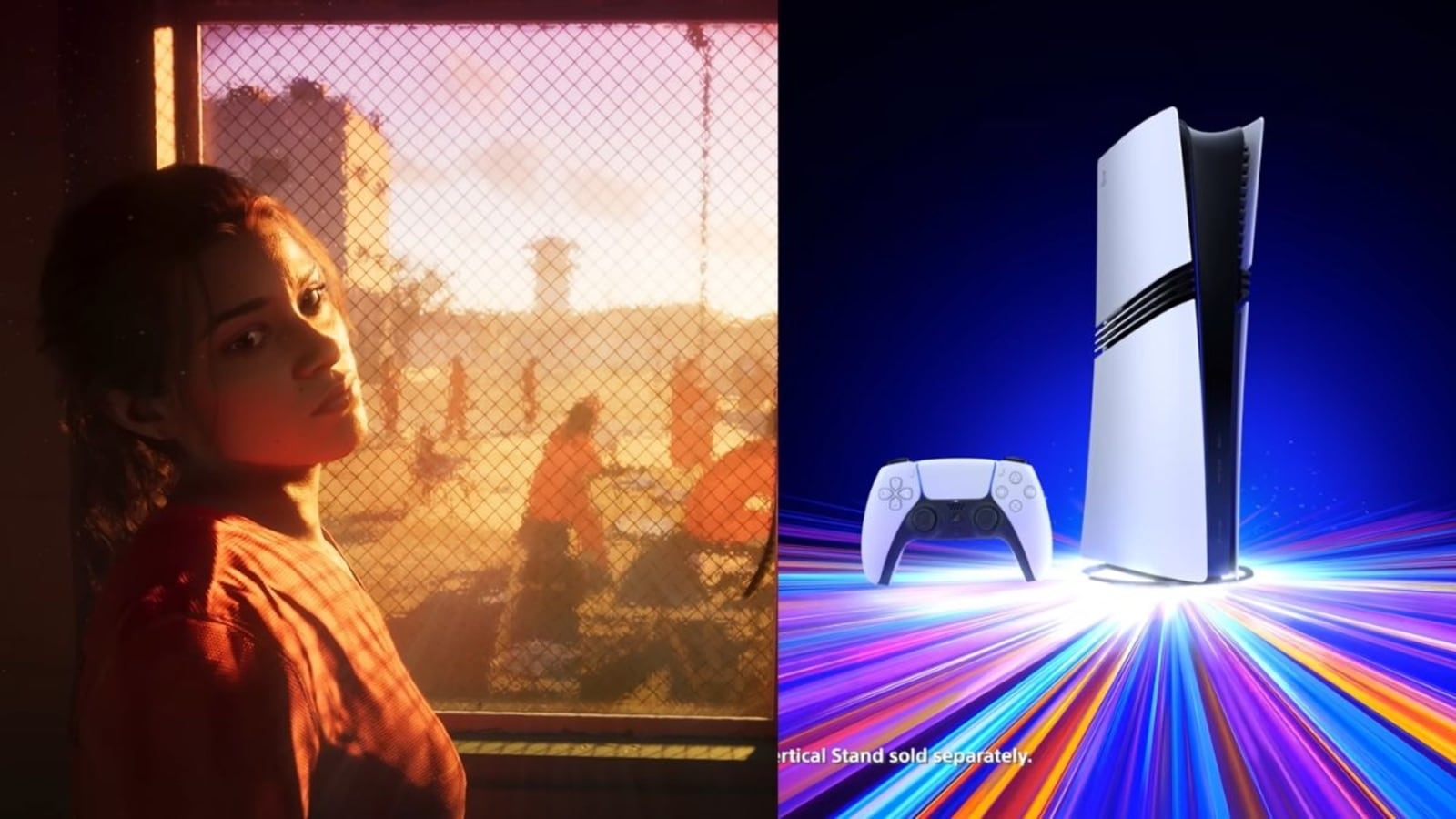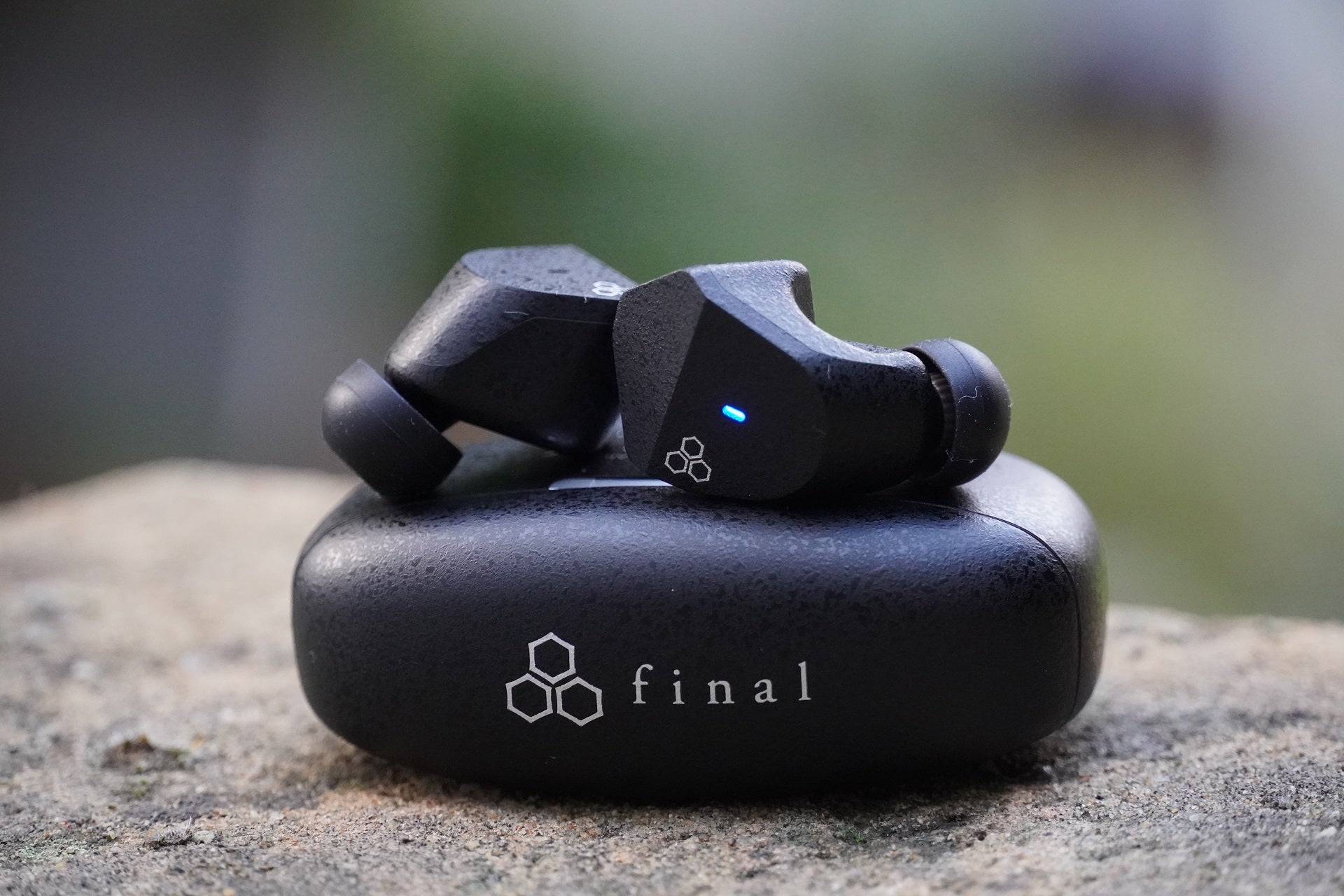Verdict
The Final ZE3000 hit the mark for sound quality, with a presentation that’s as natural and expressive as any wireless earphones at this price. They don’t offer much in the way of features, and call quality can suffer in busy areas, so while there’s no doubt that they’re a great for audio, others may favour more feature-packed true wireless efforts.
Pros
- Excellent sound for the money
- Good noise-isolating design
- Stable and reliable wireless connection
- Solid battery life
- Affordable price
Cons
- Call quality suffers in busy areas
- Some may feel they’re lacking for features
Availability
- UKRRP: £119
- USARRP: $119
- EuropeRRP: €139
Introduction
Final has made wired headphones its bread and butter since the company’s formation (as we know it) in 2014. But it’s taken eight years for Final to move into the Bluetooth market with the ZE3000 and UX3000 headphones.
You can read our thoughts of the UX3000 wireless noise cancelling over-ears (in short, they’re very good), but the ZE3000 diverge from their bigger sibling’s path by eschewing noise cancellation for an emphasis on the earphones’ design to block environmental sounds.
Does it put the ZE3000 at a disadvantage? Perhaps, but these true wireless earphones are less about the features and more about the sound, and on that front they’re a formidable effort.
Design
- Snug fit
- Responsive tap controls
- Compact, lightweight housing
The ZE3000’s shape is designed for the most optimal seal against external sounds. The fit (for me, at least) is snug, and once in place, they barely move – much like Sennheiser’s CX range of wireless earphones. Ear-tip sizes range from SS (very small) to LL (very large), so there should be a size to fit everyone’s ears.
The seal remains tight but not overbearing, and comfort levels prove satisfactory over longer listening sessions, with no noticeable discomfort. The noise-isolating properties of the earphones’ design impresses, effectively reducing the impact of noise both indoors and out.
Wearing them at a train station, the piercing sounds of a train’s brakes were dulled; voices on the train were adequately smothered; and they dealt well with the significant amount of ambient noise in busy areas.
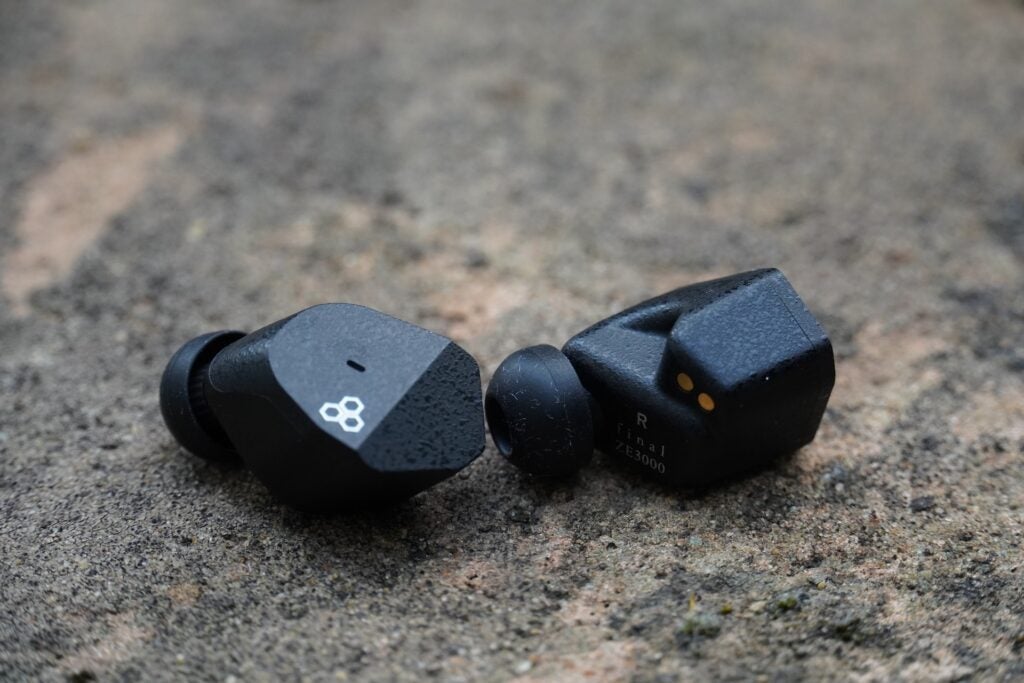
Journeys on the Tube showed the buds to be less capable when the wind noise picks up, and above ground when faced with loud noises (a construction site near the offices, for example) is where the lack of noise cancellation is most felt. Nevertheless, in most cases, the ZE3000’s design works to block out sounds and leave your music mostly undisturbed.
There are no physical buttons; the ZE3000 feature touch controls located around the triangular-shaped area, and those taps (or even a nudge) prove very responsive.
Playback, track skipping, and volume are all covered, and you can call up voice assistance on your mobile device via a triple-tap – but only when music is paused. I’ve needed to be deliberate with my presses when more than one tap is required, such as volume and voice assistance. The ZE3000 don’t seem to like fast taps, preferring steady taps instead. This has become irritating when, for example, I’ve tried to raise the volume but only succeeded in pausing playback – which has happened several times.
The ZE3000 are available in black and white finishes, and both sport the Shibo coating that featured on the UX3000. Shibo is an old Japanese word that means wrinkle on the surface of paper or leather, and that’s the effect here – a textured surface meant to repel dust. It presents a nice, minimalist look; the Shibo surface offering a smooth interaction with the controls.
The ZE3000 are rated to IPX4 for protection against some water and sweat, and given the security and comfort of the fit, I’d say they’re worth considering for indoor exercise and gym work. Less so for outdoor exercise, though, if you need to be aware of your surroundings.
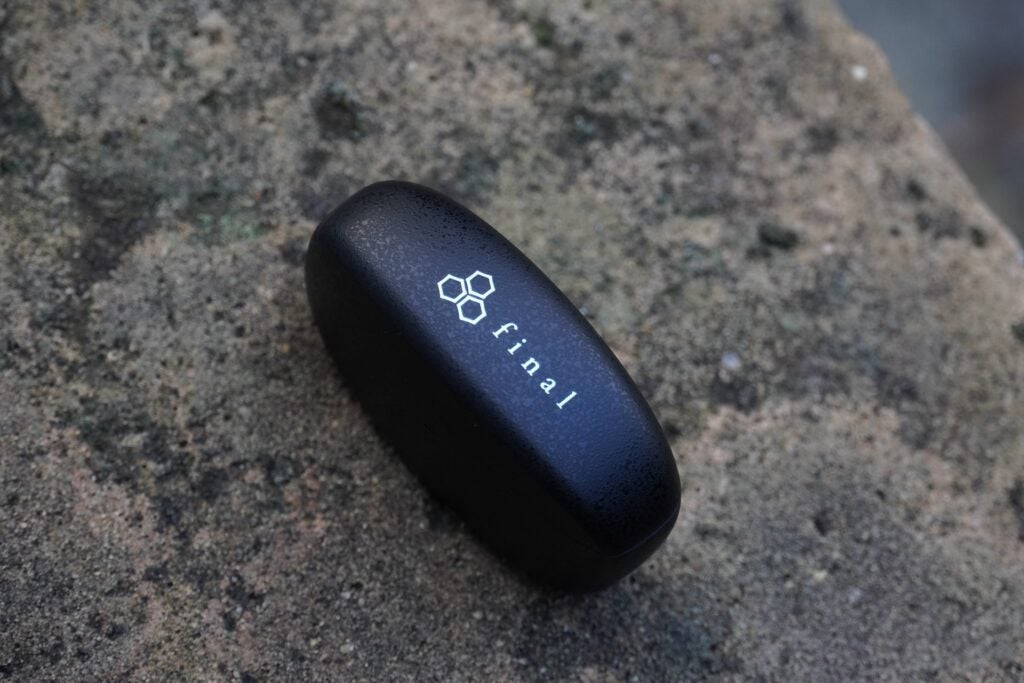
The charging case is covered in the Shibo coating and is sufficiently small enough to stow in a pocket. There’s an LED on the front that indicates the current battery level (green is good, red not so much), with a USB-C port on the underside for charging.
Features
- No noise cancellation/Transparency mode
- AptX Adaptive Bluetooth
- Good battery life
- Call quality struggles with noise
Final’s decision to avoid ANC puts these earphones in the same bracket as the Technics EAH-AZ40 and the more expensive Astell & Kern UW100. However, those two come with features such as a Transparency mode and EQ customisation, while by comparison the Final’s feature set is frugal.
Simplicity can be a good thing, but the ZE3000 do lack a degree of convenience that some buyers around this price point might expect. There’s no mention of either fast- or wireless charging, with charging time reported by Final as 90 minutes for the earphones and two hours for the case from an empty battery.
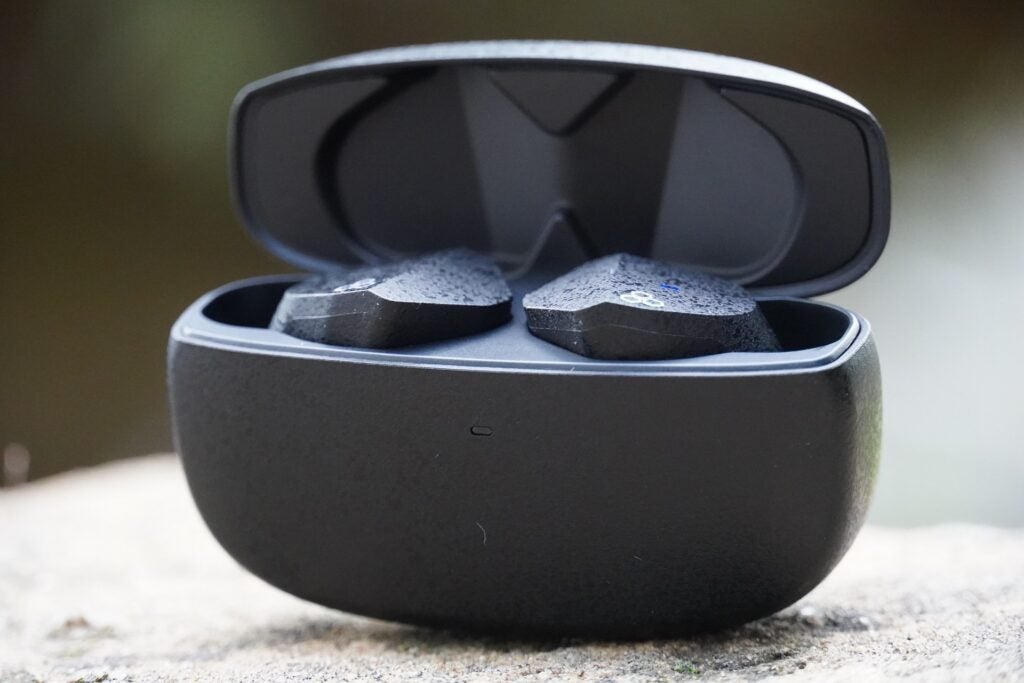
Stamina in general is claimed to be seven hours, with another four charges in the case for a total of 35. Playing a Spotify playlist for two hours at medium volume saw the battery life fall to 70%, which suggests the seven-hour goal could be reasonably achieved. As a point of comparison to similarly priced earphones, that’s a little less than the Technics EAH-AZ40’s 7.5 hours, and less than the Sennheiser CX Plus’ 9 hours.
The ZE3000 offer Bluetooth 5.2, but doesn’t support multi-point pairing, so they can’t be connected to two devices at once. Pairing them with an iPhone 13 mini meant I had to disconnect from an Android smartphone, which automatically put them in pairing mode. That’s the easiest way I’ve found of connecting to a new device.
SBC, AAC, aptX and aptX Adaptive Bluetooth codecs are supported. The latter claims to support 24-bit/48kHz transmission, but that’s likely to be lossy rather than lossless in light of Bluetooth’s limitations. The ZE3000 can be used in monoaural form (a single earphone), and in this scenario, only SBC and AAC are supported.
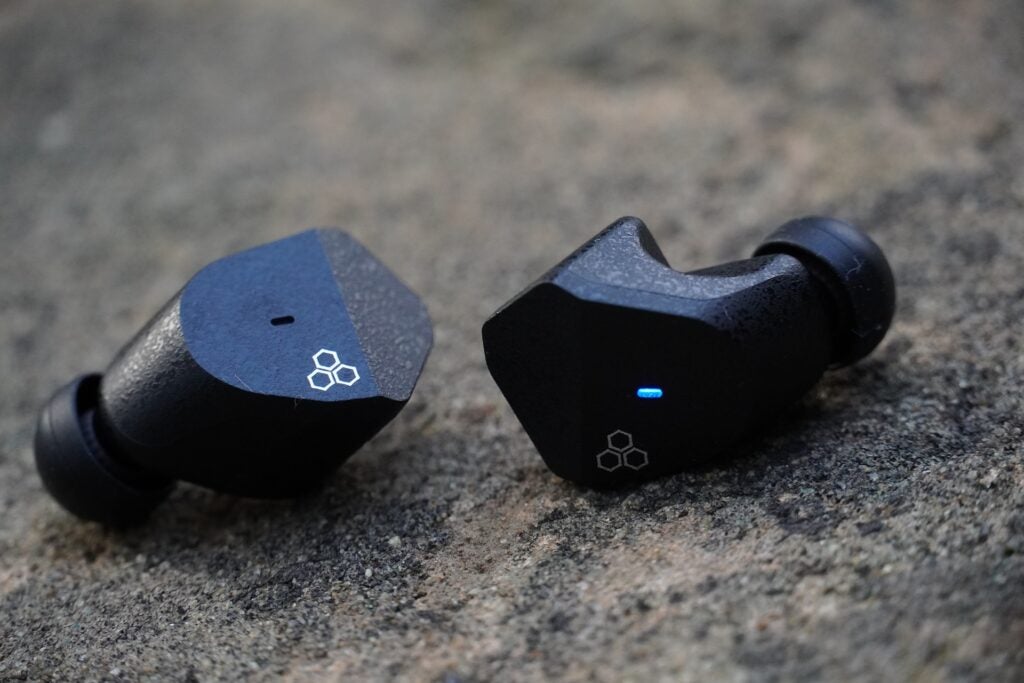
Wireless performance is strong when used at train terminals such as London Waterloo and Victoria, with only a few flickers noted, but no meaningful drops in the connection.
Less assured is Final’s call quality, which is below average – a story of being good in quiet areas but leaky in busy and loud areas. In quiet places, the person on the other end of the line was able to hear me clearly. However, walking past building and construction work was problematic, my voice drowned out by the amount of noise. For calls, you’d want to find a quiet place.
That’s pretty much all there is on the feature front. There is a “my final” app, but it’s in Japanese (an English version is in the works) and only for registration purposes, which the ZE3000 doesn’t support anyway.
Sound Quality
- Balanced, detailed presentation
- Expressive with voices, instruments
The Final ZE3000 set their stall out as being focused on affordable, high-quality sound. They aim to achieve this with their f-Core for Wireless drive unit, which claims ultra-low distortion for higher clarity and reduced signal noise. That’s complemented by the f-LINK Damping System that optimises the pressure within the ZE3000’s acoustic chamber, producing a natural sound and better control over low frequencies.
In the end, the work that Final has done has resulted in a set of buds that deliver one of the more naturalistic and musical performances at this price. The ZE3000 offer plenty of detail and clarity, a good sense of dynamism in how they describe the transitions between quiet and loud, with the end result being a coherent, well-defined soundstage for your ears to take in.
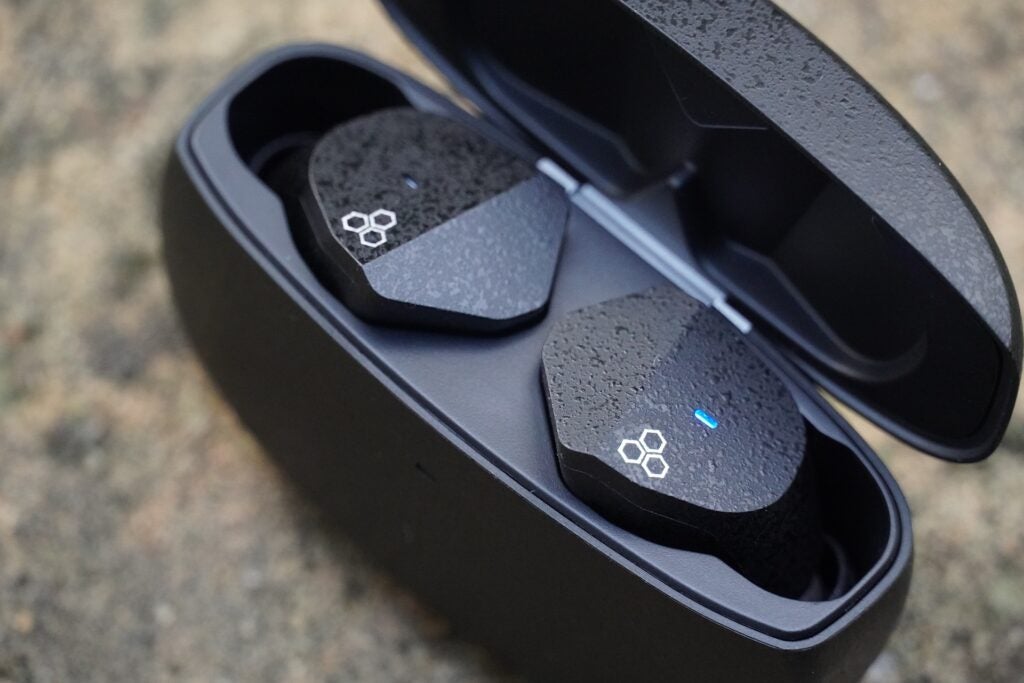
There are areas where other true wireless earphones have the edge, but when compared to the Beats Studio Buds and Sennheiser CX Plus, neither pair achieves the overall tonal balance of the ZE3000. The Sennheiser carry a bigger, weighty bass performance along with a soundstage that’s presented in bigger and wider terms, but the Final are clearer in how they paint music, more revealing in the detail and nuance in Lianne La Havas’ Bittersweet.
The Final present the backing vocals along with the keyboards and percussive instruments of that track with a better sense of definition and clarity, unearthing more fidelity and precision than I’ve found with the Sennheiser.
These buds aren’t as big in the bass department as the Sennheiser with Faye Webster’s Sometimes. Nevertheless, there’s nice texture and weight to the bass and drum instruments in that track. It’s a similar case with TNGHT’s Higher Ground; there’s more nuance and fewer fireworks from the Final. If you like your bass then the Final ZE3000 take a more measured and even approach that’s less powerful, but counters with more detail and clarity in the mid- and treble ranges, again etching out a clearer, more incisive performance.
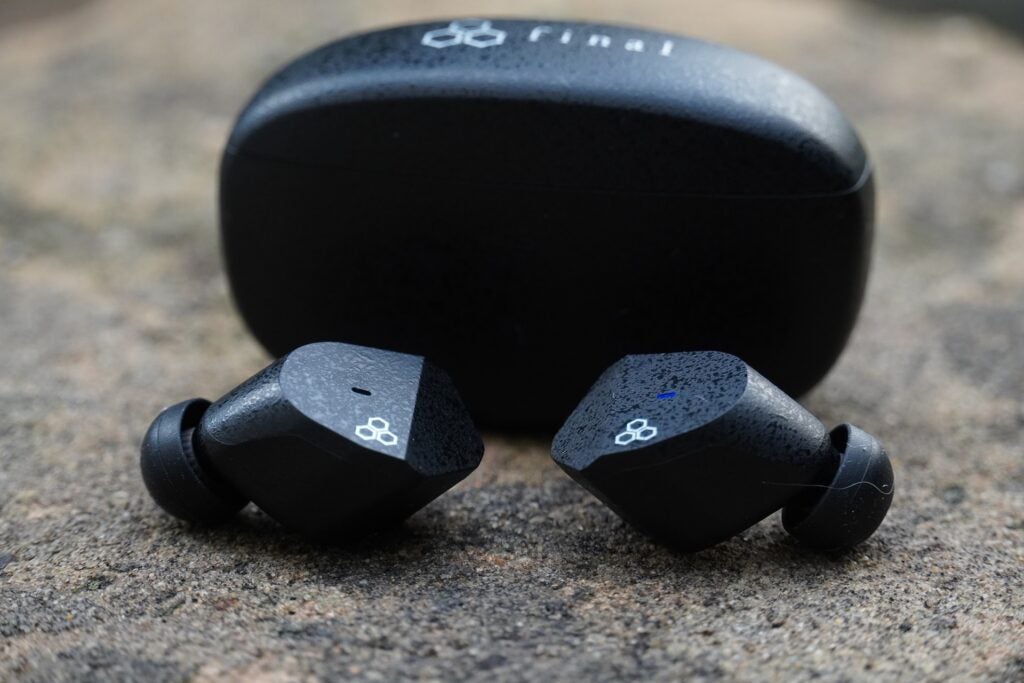
And the Final are an expressive-sounding pair, capturing voices and the texture of instruments in a natural way. Compared to the Studio Buds, the Beats have the edge in high frequencies, displaying a slightly crisper and brighter tone; but the Beats don’t describe instruments or voices as well as the Final ZE3000, nor extract the same level of dynamism.
Where the Beats sound cold, the ZE3000 flesh out the tones of the French horn that blares towards the end of Hans Zimmer’s Time, and it’s the difference between a solid performance and one that ekes out a more emotional response. In the end, it’s this that marks out the difference between the ZE3000 and their closest competitors.
Latest deals
Should you buy it?
For the terrific wireless performance Sound quality is great and so is the wireless connection that enables it, delivering a stable, reliable performance.
You want the creature comforts of noise cancellation The Final don’t offer any advanced features of that sort. If that’s your main concern, then there are a growing number of ANC earbuds around this price to consider.
Final Thoughts
The Final ZE3000 are one of the best-sounding true wireless earphones at this price – of that I don’t think there’s any question. If you care about audio fidelity and want high-quality sound without paying oodles for it, put these on your shortlist.
Convenience, however, isn’t what the ZE3000 are most concerned about. Call quality is average at best; there’s no app support; nor anything in the form of a Transparency mode or noise cancellation.
These are finely tuned wireless earbuds made by those who appreciate music, and if that speaks to you then there are few finer efforts at this price in 2022.
How we test
We test every headphones we review thoroughly over an extended period of time. We use industry-standard tests to compare features properly. We’ll always tell you what we find. We never, ever, accept money to review a product.
Find out more about how we test in our ethics policy.
Tested for more than a month
Tested with real world use
FAQs
There’s no ANC or Transparency mode, with Final placing an emphasis on the earphones’ design to block out sounds.
Sustainability
Trusted Reviews’ holds the fact that global warming is not a myth as a core value and will continuously endeavour to help protect our planet from harm in its business practices.
As part of this mission, whenever we review a product we send the company a series of questions to help us gauge and make transparent the impact the device has on the environment.
We currently haven’t received answers to the questions on this product, but will update this page the moment we do. You can see a detailed breakdown of the questions we ask and why in our sustainability info page.
Jargon buster
Bluetooth
Bluetooth – named after 10th-century Danish king Harald Bluetooth who united Denmark’s tribes into a single kingdom – is a method of wireless transmission that allows for the exchange of data between devices over short distances.
Verdict
The Final ZE3000 hit the mark for sound quality, with a presentation that’s as natural and expressive as any wireless earphones at this price. They don’t offer much in the way of features, and call quality can suffer in busy areas, so while there’s no doubt that they’re a great for audio, others may favour more feature-packed true wireless efforts.
Pros
- Excellent sound for the money
- Good noise-isolating design
- Stable and reliable wireless connection
- Solid battery life
- Affordable price
Cons
- Call quality suffers in busy areas
- Some may feel they’re lacking for features
Availability
- UKRRP: £119
- USARRP: $119
- EuropeRRP: €139
Introduction
Final has made wired headphones its bread and butter since the company’s formation (as we know it) in 2014. But it’s taken eight years for Final to move into the Bluetooth market with the ZE3000 and UX3000 headphones.
You can read our thoughts of the UX3000 wireless noise cancelling over-ears (in short, they’re very good), but the ZE3000 diverge from their bigger sibling’s path by eschewing noise cancellation for an emphasis on the earphones’ design to block environmental sounds.
Does it put the ZE3000 at a disadvantage? Perhaps, but these true wireless earphones are less about the features and more about the sound, and on that front they’re a formidable effort.
Design
- Snug fit
- Responsive tap controls
- Compact, lightweight housing
The ZE3000’s shape is designed for the most optimal seal against external sounds. The fit (for me, at least) is snug, and once in place, they barely move – much like Sennheiser’s CX range of wireless earphones. Ear-tip sizes range from SS (very small) to LL (very large), so there should be a size to fit everyone’s ears.
The seal remains tight but not overbearing, and comfort levels prove satisfactory over longer listening sessions, with no noticeable discomfort. The noise-isolating properties of the earphones’ design impresses, effectively reducing the impact of noise both indoors and out.
Wearing them at a train station, the piercing sounds of a train’s brakes were dulled; voices on the train were adequately smothered; and they dealt well with the significant amount of ambient noise in busy areas.

Journeys on the Tube showed the buds to be less capable when the wind noise picks up, and above ground when faced with loud noises (a construction site near the offices, for example) is where the lack of noise cancellation is most felt. Nevertheless, in most cases, the ZE3000’s design works to block out sounds and leave your music mostly undisturbed.
There are no physical buttons; the ZE3000 feature touch controls located around the triangular-shaped area, and those taps (or even a nudge) prove very responsive.
Playback, track skipping, and volume are all covered, and you can call up voice assistance on your mobile device via a triple-tap – but only when music is paused. I’ve needed to be deliberate with my presses when more than one tap is required, such as volume and voice assistance. The ZE3000 don’t seem to like fast taps, preferring steady taps instead. This has become irritating when, for example, I’ve tried to raise the volume but only succeeded in pausing playback – which has happened several times.
The ZE3000 are available in black and white finishes, and both sport the Shibo coating that featured on the UX3000. Shibo is an old Japanese word that means wrinkle on the surface of paper or leather, and that’s the effect here – a textured surface meant to repel dust. It presents a nice, minimalist look; the Shibo surface offering a smooth interaction with the controls.
The ZE3000 are rated to IPX4 for protection against some water and sweat, and given the security and comfort of the fit, I’d say they’re worth considering for indoor exercise and gym work. Less so for outdoor exercise, though, if you need to be aware of your surroundings.

The charging case is covered in the Shibo coating and is sufficiently small enough to stow in a pocket. There’s an LED on the front that indicates the current battery level (green is good, red not so much), with a USB-C port on the underside for charging.
Features
- No noise cancellation/Transparency mode
- AptX Adaptive Bluetooth
- Good battery life
- Call quality struggles with noise
Final’s decision to avoid ANC puts these earphones in the same bracket as the Technics EAH-AZ40 and the more expensive Astell & Kern UW100. However, those two come with features such as a Transparency mode and EQ customisation, while by comparison the Final’s feature set is frugal.
Simplicity can be a good thing, but the ZE3000 do lack a degree of convenience that some buyers around this price point might expect. There’s no mention of either fast- or wireless charging, with charging time reported by Final as 90 minutes for the earphones and two hours for the case from an empty battery.

Stamina in general is claimed to be seven hours, with another four charges in the case for a total of 35. Playing a Spotify playlist for two hours at medium volume saw the battery life fall to 70%, which suggests the seven-hour goal could be reasonably achieved. As a point of comparison to similarly priced earphones, that’s a little less than the Technics EAH-AZ40’s 7.5 hours, and less than the Sennheiser CX Plus’ 9 hours.
The ZE3000 offer Bluetooth 5.2, but doesn’t support multi-point pairing, so they can’t be connected to two devices at once. Pairing them with an iPhone 13 mini meant I had to disconnect from an Android smartphone, which automatically put them in pairing mode. That’s the easiest way I’ve found of connecting to a new device.
SBC, AAC, aptX and aptX Adaptive Bluetooth codecs are supported. The latter claims to support 24-bit/48kHz transmission, but that’s likely to be lossy rather than lossless in light of Bluetooth’s limitations. The ZE3000 can be used in monoaural form (a single earphone), and in this scenario, only SBC and AAC are supported.

Wireless performance is strong when used at train terminals such as London Waterloo and Victoria, with only a few flickers noted, but no meaningful drops in the connection.
Less assured is Final’s call quality, which is below average – a story of being good in quiet areas but leaky in busy and loud areas. In quiet places, the person on the other end of the line was able to hear me clearly. However, walking past building and construction work was problematic, my voice drowned out by the amount of noise. For calls, you’d want to find a quiet place.
That’s pretty much all there is on the feature front. There is a “my final” app, but it’s in Japanese (an English version is in the works) and only for registration purposes, which the ZE3000 doesn’t support anyway.
Sound Quality
- Balanced, detailed presentation
- Expressive with voices, instruments
The Final ZE3000 set their stall out as being focused on affordable, high-quality sound. They aim to achieve this with their f-Core for Wireless drive unit, which claims ultra-low distortion for higher clarity and reduced signal noise. That’s complemented by the f-LINK Damping System that optimises the pressure within the ZE3000’s acoustic chamber, producing a natural sound and better control over low frequencies.
In the end, the work that Final has done has resulted in a set of buds that deliver one of the more naturalistic and musical performances at this price. The ZE3000 offer plenty of detail and clarity, a good sense of dynamism in how they describe the transitions between quiet and loud, with the end result being a coherent, well-defined soundstage for your ears to take in.

There are areas where other true wireless earphones have the edge, but when compared to the Beats Studio Buds and Sennheiser CX Plus, neither pair achieves the overall tonal balance of the ZE3000. The Sennheiser carry a bigger, weighty bass performance along with a soundstage that’s presented in bigger and wider terms, but the Final are clearer in how they paint music, more revealing in the detail and nuance in Lianne La Havas’ Bittersweet.
The Final present the backing vocals along with the keyboards and percussive instruments of that track with a better sense of definition and clarity, unearthing more fidelity and precision than I’ve found with the Sennheiser.
These buds aren’t as big in the bass department as the Sennheiser with Faye Webster’s Sometimes. Nevertheless, there’s nice texture and weight to the bass and drum instruments in that track. It’s a similar case with TNGHT’s Higher Ground; there’s more nuance and fewer fireworks from the Final. If you like your bass then the Final ZE3000 take a more measured and even approach that’s less powerful, but counters with more detail and clarity in the mid- and treble ranges, again etching out a clearer, more incisive performance.

And the Final are an expressive-sounding pair, capturing voices and the texture of instruments in a natural way. Compared to the Studio Buds, the Beats have the edge in high frequencies, displaying a slightly crisper and brighter tone; but the Beats don’t describe instruments or voices as well as the Final ZE3000, nor extract the same level of dynamism.
Where the Beats sound cold, the ZE3000 flesh out the tones of the French horn that blares towards the end of Hans Zimmer’s Time, and it’s the difference between a solid performance and one that ekes out a more emotional response. In the end, it’s this that marks out the difference between the ZE3000 and their closest competitors.
Latest deals
Should you buy it?
For the terrific wireless performance Sound quality is great and so is the wireless connection that enables it, delivering a stable, reliable performance.
You want the creature comforts of noise cancellation The Final don’t offer any advanced features of that sort. If that’s your main concern, then there are a growing number of ANC earbuds around this price to consider.
Final Thoughts
The Final ZE3000 are one of the best-sounding true wireless earphones at this price – of that I don’t think there’s any question. If you care about audio fidelity and want high-quality sound without paying oodles for it, put these on your shortlist.
Convenience, however, isn’t what the ZE3000 are most concerned about. Call quality is average at best; there’s no app support; nor anything in the form of a Transparency mode or noise cancellation.
These are finely tuned wireless earbuds made by those who appreciate music, and if that speaks to you then there are few finer efforts at this price in 2022.
How we test
We test every headphones we review thoroughly over an extended period of time. We use industry-standard tests to compare features properly. We’ll always tell you what we find. We never, ever, accept money to review a product.
Find out more about how we test in our ethics policy.
Tested for more than a month
Tested with real world use
FAQs
There’s no ANC or Transparency mode, with Final placing an emphasis on the earphones’ design to block out sounds.
Sustainability
Trusted Reviews’ holds the fact that global warming is not a myth as a core value and will continuously endeavour to help protect our planet from harm in its business practices.
As part of this mission, whenever we review a product we send the company a series of questions to help us gauge and make transparent the impact the device has on the environment.
We currently haven’t received answers to the questions on this product, but will update this page the moment we do. You can see a detailed breakdown of the questions we ask and why in our sustainability info page.
Jargon buster
Bluetooth
Bluetooth – named after 10th-century Danish king Harald Bluetooth who united Denmark’s tribes into a single kingdom – is a method of wireless transmission that allows for the exchange of data between devices over short distances.








